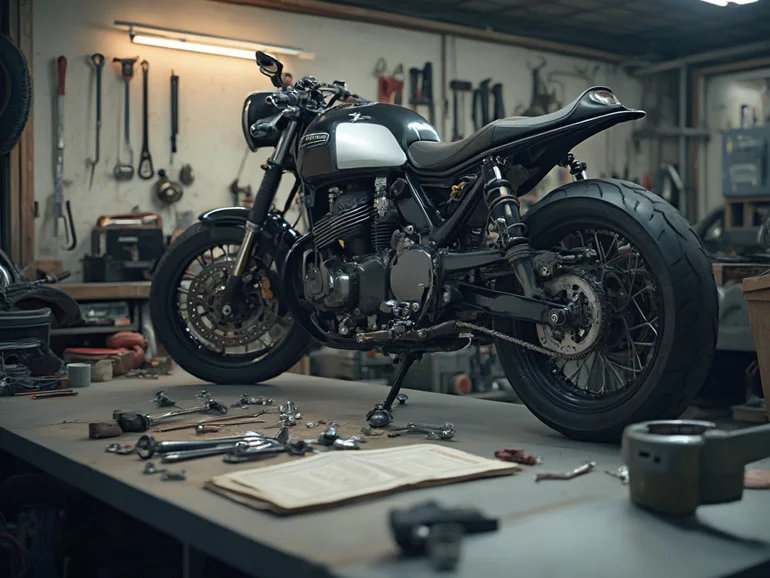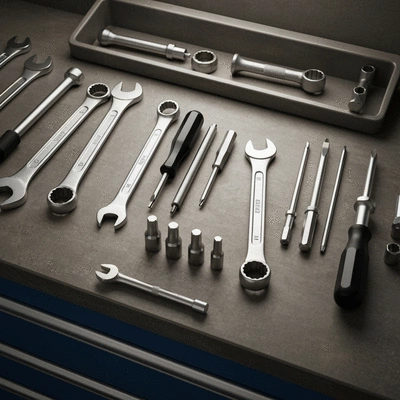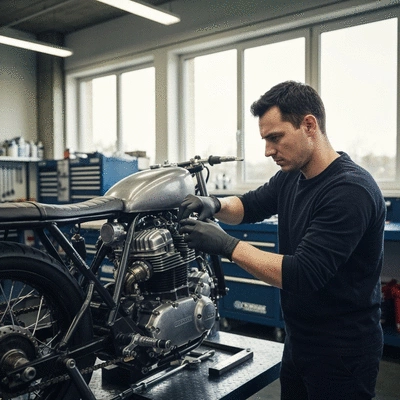
When considering motorcycle repairs, the choice between DIY and professional services can significantly impact your wallet and your ride. Have you thought about the hidden costs that may arise? Let’s delve into the key factors that will help you make an informed decision.
Understanding the financial and practical implications of repairing your motorcycle yourself versus hiring a professional is crucial. Below is a comparison of typical costs and key decision factors to help you make an informed choice. For a detailed breakdown of expenses in your region, consider checking out motorcycle repair costs in Australia.
Tools: Basic sets from $100, specialized tools into hundreds.
Parts: Brake pads $50-$150, engine components higher.
Time: Valued at $20/hour (e.g., 10 hours = $200).
Example: Oil & Filter Change: $60-$100. Clutch Replacement: Over $500.
Hourly Rates: Typically $80-$150 per hour.
Fixed Rates: Oil change might be $100 flat.
Example: Comprehensive Inspection/Tune-up: $300-$600.
As a motorcycle enthusiast, I often hear riders asking about the costs associated with DIY motorcycle repairs versus hiring a professional mechanic. It's a valid question! Understanding these costs can greatly influence your decision on how to maintain your beloved bike. Let’s dive into the nitty-gritty details and see what’s involved.
When you consider taking on a DIY project, you’ll need to account for a few key expenses. These typically include tools, parts, and your own time investment. Each of these elements plays a crucial role in determining the overall cost of a DIY repair.
By breaking down these expenses, you can start to see how quickly costs can add up. However, the allure of working on your own bike can be incredibly rewarding. For more advice on essential tasks, check out our guide on DIY motorcycle maintenance every rider needs.

If DIY isn’t your style, understanding what to expect from professional mechanic services is key. The costs here can vary based on the service center's reputation, location, and the complexity of the repair. Let’s break it down further.
Knowing what you can expect to pay for labor is essential, especially when comparing DIY options versus professional services.
In addition to labor, you’ll also need to consider parts and service fees. A full service, including parts, can range from a few hundred to over a thousand dollars depending on what needs to be done. For example, a comprehensive inspection and tune-up might cost around $300 to $600.
In summary, understanding the cost differences between DIY motorcycle repairs and professional services is crucial for making informed decisions. Whether you choose to roll up your sleeves or trust a mechanic, knowing the potential costs can help you plan your motorcycle maintenance better!
Consider documenting your DIY repair process with photos and notes. Not only does this help you remember what you did for future reference, but it can also serve as a valuable resource for other riders in the community. Sharing your journey can inspire and assist fellow motorcycle enthusiasts!
When it comes to motorcycle repairs, making the right choice between DIY and professional services can be the difference between a smooth ride and a costly mistake. Let’s face it, understanding the key factors involved is crucial. Here are some points to consider that can help you weigh your options:
Evaluating whether to tackle repairs yourself or hire a mechanic involves several elements. Here’s a quick list of factors to keep in mind:
By weighing these factors, you can make a more informed decision. Remember, it’s perfectly okay to lean towards professional help if you feel out of your depth!
Each motorcycle repair situation is unique. When weighing time, cost, and skill, think about how each aspect impacts your decision. For example, a simple oil change might be something you can do quickly at home, while replacing a transmission could be best left to the professionals. I recommend jotting down a few repairs you’re considering and categorizing them based on these factors.

So, you’ve decided which route to take. Now what? Here are practical next steps based on your choice:
Having a clear plan will make the entire process smoother, whether you’re getting your hands dirty or trusting someone else with your bike.
For DIY repairs, budgeting is key. Be sure to consider not just the cost of parts, but also any special tools you might need. I often recommend setting aside a little extra for unexpected expenses. This way, you won’t be caught off guard!
If you decide to go with a professional, it’s important to find a mechanic you can trust. Here’s a list of questions you can ask:
Asking these questions not only helps you gauge their experience but also ensures you feel confident about leaving your bike in their hands!
Knowing the certifications a mechanic holds can significantly influence your choice. A certified mechanic has undergone specific training and can be trusted to perform quality work.
Look for mechanics with certifications from recognized bodies, such as the Motorcycle Mechanics Institute. These certifications indicate a level of professionalism and commitment to safety and quality.
Don’t underestimate the power of customer reviews! Research online feedback and ratings from other riders. Look for patterns in comments regarding service quality and pricing. This information can provide a clearer picture of what to expect and help you choose a mechanic who aligns with your needs. You can also explore resources like trusted motorcycle mechanics in Australia to aid your decision.
Whether you end up going DIY or professional, engaging with the motorcycle repair community can enhance your knowledge and skills. Sharing experiences and learning from others can lead to more informed decisions and even new friendships!
I encourage all riders to share their experiences, whether positive or negative. Your insights can help fellow riders avoid pitfalls and connect with quality services.
Have you tackled a repair yourself? Or perhaps had a great experience with a mechanic? Sharing your story can make a real difference for someone else navigating similar choices!
To truly become a skilled motorcycle owner, consider exploring additional resources. There’s always something new to learn!
Look for books and online courses geared towards motorcycle maintenance. Websites like Best Motorcycle Repairs Australia also offer valuable insights and reviews that can help you along the way.
Don’t forget about community workshops! These can be fantastic places to learn new skills and connect with other motorcyclists who share your passion. Plus, you might find mentors who can guide you through more complex repairs.
Here is a quick recap of the important points discussed in the article:
We're your national guide to trustworthy motorcycle mechanics, ensuring every ride is smooth and safe. From sportbikes to cruisers, we connect you with quality service across Australia.
